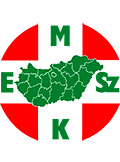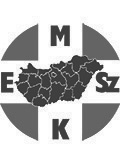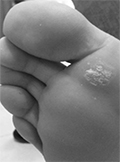The eLitMed.hu medical portal uses computer cookies for convenient operation. Detailed information can be found in the Cookie-policy.
Journal of Nursing Theory and Practice - 2016;29(04)
Content
[Application of external circulatory assist device in cases of cardiac failure]
[The Heart and Vascular Centre of Semmelweis University was the first institution in Hungary to routinely apply external mechanical circulatory support (Extracorporal Membrane Oxigenation, Ventricular Assist Device) as a new alternative to treat cardiogenic shock cases. The objective of our study was to assess how frequently certain therapeutic methods were applied, and to evaluate the demographic characteristics, the case historic and the mortality data of the patients treated, as well as to demonstrate the incidence rate of the most frequent complications. Our study was based on the data of patients suffering cardiogenic shocks treated with external circulatory assist devices between 1. June, 2012 and 31. January, 2016. The study has been carried out analytically and retrospectively after data collection from written and electronic patient documentation. Data analysis has been executed by SPSS software. The results revealed uneven gender distribution, over 60% of incidence in case of four examined complications, and an elevated mortality rate of patients over 60 years old. We found that there is a higher risk for complications if mechanical circulatory support is applied, and we made a suggestion to reconsider the application of this support for patients over certain ages. The study demonstrated that our results match the statistical data found in international medical literature. ]
[The evolution of skull reconstruction surgical techniques and it’s impact on patient’s care and the effect on patients from the nursing perspective]
[Background: Facts support that decompressive craniectomy allaviates life-threatening acute high intracranial pressure and it is performed worldwide. Less attention has been paid to the late negative consequences of the widely open cranium. Hence there is a need for timely closure of the defect and precise cranioplasty. Objective: The goal of the present study was to compare the clinical results and patient care data gained by a novel cranioplasty method, the so called computer-aided design and computer-aided manufacturing (CAD/CAM) technique, versus conventional operative procedures. Patients and Methods: Seventy patients were operated on by conventional reconstructive methods (n=70) in our department between 2004 and 2006. These patients served as the control group. Sixty patients had got cranioplasty with individually prepared cranial implants using the CAD/CAM technique (n=60) in 2011 to 2013. The total number of the investigated patient population was n=130. Age distribution of the group varied from 17 to 80. Retrospective neurological and patient care data were collected and compared at the two surgical technique. Results: More precise coverage of the cranial defect and acceptable cosmetic result were achieved in every case operated on with the CAD/CAM surgical technique. The ratio of patients with persistent vegetative-state decreased, and the neurological outcome improved following surgery using the CAD/CAM method. The patient care was easier and rehabilitation procedure was more favourable at the CAD/CAM population. Iatrogenic infection and wound- healing complications were less frequent at the department between 2011 and 2013. The quality of patient care have been improving considerably by regular education and continuous development of nursing standard. Patients need for hospital stay decreased, therefore health economic aspects and cost-benefit ratio improved at the Department of Neurosurgery in the Péterfy Hospital. Conclusion: This study demonstrates an improvement in neurological outcome and easier patient care following CAD/CAM reconstructive surgery of cranial defects in status of normalized intracranial pressure. Results support the extended use of the method in the XXI. Century. ]
[The treatment of verruca vulgaris combining conservative and cryotherapy]
[Aim of the research: Presenting the combined treatment of and ways of preventing verruca vulgaris (viral wart, simple wart), which is significant considering public health, by the help of general health education according to our own research results. Research and sampling methods: The research was implemented from 1st September, 2014 to 30th June, 2015 in Budapest with 124 patients being treated with verruca vulgaris. The research method is following the treatment, documentation and the analysis of our own research experience. Results: We treated 635 verruca vulgaris of 124 patients combining conservative and cryotherapy. 18,6% of the symptoms recovered after 3-6 weeks; 53,2% of them after 6-9 weeks; and 23,4% of them recovered in 12 weeks; 4,8% of them required further treatment. Conclusions: The optimal treatment of verruca vulgaris is combining conservative and cryotherapy, which is more effective, less painful, and delivers better aesthetic results than monotherapies. ]
[Nursing care workers to assess job skills calicivirus caused by the accumulation of tasks required hospital infections]
[Introduction: Author presents the results of surveys of knowledge-prepared nurses’ll need to Calicivirus infections at hospitals accumulation, which was conducted in 7 (a mix of invasive and non-invasive track) ward nurses skilled and unskilled workers. Aim of research: to find out which questions need to put the emphasis on nurses hospital hygiene education to subjects of age, prevention and early detection of infections from spreading which is an important part of the hospital wards enteric outbreaks may occur. Research and sampling methods: The research used an anonymous questionnaire method. The survey was conducted between January 04 2016 and whether 29 or not. The target population for the selection of the author of the favored classes of patient care, on which the last 6 years due to Calicivirus outbreak occurred, which was reported in the NNSR database. Results: 158 nurses participated. The obtained results show that nurses have the knowledge and experience to an infection caused by a Calicivirus, but there are also gaps in knowledge, particularly in the event of hospital infections overlapping actions to be taken to curb the epidemic. Conclusion: Keep the enteric infections also with regard to the knowledge acquired basic education level, especially since the hospital departments favor the spread of these infections are due to sanitary facilities shared by the patient’s condition resulting from lower personal hygiene and multi-bed wards. ]
1.
Clinical Neuroscience
[Headache registry in Szeged: Experiences regarding to migraine patients]2.
Clinical Neuroscience
[The new target population of stroke awareness campaign: Kindergarten students ]3.
Clinical Neuroscience
Is there any difference in mortality rates of atrial fibrillation detected before or after ischemic stroke?4.
Clinical Neuroscience
Factors influencing the level of stigma in Parkinson’s disease in western Turkey5.
Clinical Neuroscience
[The effects of demographic and clinical factors on the severity of poststroke aphasia]1.
2.
Clinical Oncology
[Pancreatic cancer: ESMO Clinical Practice Guideline for diagnosis, treatment and follow-up]3.
Clinical Oncology
[Pharmacovigilance landscape – Lessons from the past and opportunities for future]4.
5.






